Housley's Century Oak Winery
Castell d'Encus
-SO2 Costers del Segre White Blend 2014
Wine made by a lovely winemaker, Raül Bobet. Hand harvested sauvignon blanc and semillion. Partly fermented in 12th century stone vats in the Catalonian Pyrenees, partly French oak and Stainless steel. Hearty, seductive wine. — 7 years ago
Château Fuisse
Tête de Cru Pouilly-Fuisse Chardonnay
A 15th Century tower flanks Chateau Fuisse, a family home whose history is evidenced by a number of 300 year old artifacts and adornment. From a blend of over 20 vineyards, and about 70% sat on oak for 20 months (25% new), the remaining 30% in stainless steel tanks. Aromas of stone fruits with cedar and floral spice notes. On the palate apple and pear flavors with a citrus oak character. Lingering finish, well balanced but a little forward now, ending fresh and crisp with oaky edge. Needs more time to calm. — 7 years ago

Château Lafite Rothschild
Carruades de Lafite Pauillac Red Bordeaux Blend 2003
On the nose, ripe; blackberries, sweet & sour dark cherries, cooked cherries & strawberries & hues of blueberries. Black tea, cola, soft baking spices; vanilla, light clove & cinnamon. Crushed rocks, stones, limestone, turned, moist black earth, tobacco leaf, saddle-wood, soft leather, dry & fresh dark red florals.
The body is medium edging toward full. The tannins pretty well resolved. The ripe fruits show the hot, ripe vintage. Blackberries, sweet & sour dark cherries, cooked cherries & strawberries & hues of blueberries black tea, cola, soft baking spices; vanilla, light clove & cinnamon. Crushed rocks, stones, limestone, tobacco with ash, some graphite, soft medium dark spice, turned, forest floor, powdery but edgy minerals, saddle-wood, soft leather, dry & fresh dark red florals with some violets on the finish.
This showed better with Ribeye. The Ribeye brought out a fuller, richer wine with even more complexity. 9.35-9.4 with the Ribeye. It just missed 9.2 on its own. It’s big brother the 03 “Lafite” is 💯 point Parker wine.
Photos of; Chateau Lafite, their oak vat fermenters, Estate wine and their magnificent barrel room.
Interesting history and producers notes...Lafite Rothschild has a long and interesting history dating back to 1234, even though the property was not in the Bordeaux wine business at that time.
It is has been largely believed that vines were already planted on their terroir. The owner of the estate at the time, Gombaud de Lafite left his mark, his name. Almost 1,000 years after he owned it, the Chateau is still named after him! The vines were probably in existence at Lafite for over a century, it was not until around 1680, the majority of vineyards of what we know of as Lafite Rothschild today were created. This is because on the 1680 estate manifest, there are six mentions of their Bordeaux vineyards. Jacques de Segur, earns credit for cultivating the vineyard as I wrote in my Colon Segur post last weekend. In 1695, Alexandre de Segur married Marie-Therese de Clauzel, heiress to Chateau Latour. So to dovetail that write up, within a generation, the Segur family married into two of the greatest Bordeaux vineyards, Chateau Lafite and Chateau Latour! When their son, Nicolas-Alexandre passed away, Chateau Lafite and Chateau Latour were separated.
In 1797, Chateau Lafite was sold again. In the deed of sale, Chateau Lafite was described as a Premier Cru of Medoc. This is one of the earliest mentions of what we know of today as Lafite Rothschild producing wines of what would later be classified as an 1855 First Growth.
At that time, of Lafite were managed by the Goudal family. The Goudal family were wine historians and were able to read accurate records and details of the viticulture and marketing plans for Chateau Lafite in the estates formative years. The Goudal family gets the credit for creating the cellar and saving many of the oldest bottles that remain in the cold, dark cellars, including their oldest bottle, the 1797 Lafite!
The start of the famous Rothschild family begins in 1744, with the birth of Amschel Meyer. Amschel Meyer began creating his fortune while working as a merchant at “Zum Roten Schild,” which eventually became the family name of Rothschild.
In 1798 his sons were sent to various cities to create their fortunes. Needless to say, his sons all prospered as did their children in turn. This eventually led to them wanting to own a Chateau in Bordeaux. So in 1853, Baron Nathaniel de Rothschild, an English member of the Rothschild family, purchased Chateau Brane-Mouton. As was the custom of the day, the new owner renamed it using his name and Chateau Mouton Rothschild was born.
This was followed in 1868, when James Rothschild, another member of the family purchased Chateau Lafite, which was now a coveted First Growth.
On 8 August, 1868, Baron James d’Rothschild purchased Chateau Lafite, which was sold at a public auction in Paris. It’s assumed, he bought the property for family competitive reasons looking to one up his brother, the owner of Mouton Rothschild. At that time, Mouton Rothschild was only a Second Growth at the time. But, that does not paint the entire picture. The 1855 Classification had not taken on the importance associated with it the we see it today. Plus, buying Lafite was a reasonable investment as the vineyard sold for about 8 times its earning potential.
The actual Chateau is one of the older structures in Bordeaux, as part of the building dates back to the later part of the 16th century. In 1868, the vineyard took up 135 hectares, of which 74 hectares were cultivated with vines. Production was much smaller in those days than it is today as it was between 4,000 and 5,000 cases.
Just three months after the purchase, Baron James d’Rothschild passed away and Chateau Lafite Rothschild became the joint property of his three sons; Alphonse Rothschild, Gustave Rothschild & Edmond Rothschild. Since 1868, Chateau Lafite Rothschild has remained in the hands of the of Rothschild family. The new owners renamed the estate Chateau Lafite Rothschild.
Jumping ahead to the modern age, in 1962, the Rothschild family added to their holdings when they purchased Chateau Duhart-Milon, a Fourth Growth vineyard also located in Pauillac. It was owned by the Casteja family for more than a century, Chateau Duhart Milon suffered from neglect and was in a awful condition. By the time Duhart Milon was obtained by the Rothschild family, the vineyard was down to only 17 hectare which required extensive renovations.
Baron Eric Rothschild, nephew of Baron Elie Rothschild, took over the management of Lafite Rothschild in 1974. Baron Eric Rothschild was part of the fifth Rothschild generation to inherit Chateau Lafite Rothschild. In 1984, the Rothschild family added to their holdings in Bordeaux with the purchase of Chateau Rieussec in Sauternes.
1987 was a difficult vintage, but because that was the year Lafite celebrated the inauguration of their wine new cellar, they had a lot to be excited about.
The new cellars were built under the supervision of Catalan architect Ricartdo Bofill, is both underground and circular, with a vault supported by 16 columns, giving the structure a majestic architectural style. The cellar holds 2,200 barrels, which is about 55,000 cases of wine. The construction took two years to finish and was completed in 1988.
Domaines Baron Rothschild became one of the first Bordeaux properties to invest in South America when they purchased Vina Los Vascos from a Chilean family. The owners of Lafite Rothschild continued expanding their holdings with the purchase of Chateau lEvangile in Pomerol from the Ducasse family, who owned the property for almost 100 years.
The wine making at Chateau Lafite Rothschild was managed by Charles Chevallier, who began his position in 1994. Charles Chevallier was replaced by Eric Kohler in January 2016. 2017 saw another change at the estate when Jean Guillaume Prats replaced Christopher Salin as the President of Domaines Baron Rothschild.
Perhaps, it’s the most refined of the First Growth. The wine, like all First Growth’s takes decades to mature. It has remarkable staying powers. Bottles of 1870 Lafite Rothschild discovered in the Glamis castle remain profound at more than 140 years of age! It is consider by many Master Sommeliers to be the best wine in the world.
Chateau Lafite Rothschild is one of the earliest major Bordeaux estates to bottle their own wine. In 1890, they bottled a large portion of the wine and again in 1906. Part of the estate bottling was due to requests from Negociants who were willing to pay more for Chateau bottled wines. Also, bottling was primarily done to combat piracy. At the time, it was known that merchants in some countries, like Russia were bottling cheap wine and placing labels from Lafite Rothschild on the bottles. The Koch’s famous Jefferson bottles were not the first attempt at counterfeiting.
Prior to 1996, some would say the property had its share of ups and downs. The 1960’s and 1970’s were not great for Chateau Lafite Rothschild. But since 1996, Lafite Rothschild has been producing some of the best wine in their history!
Sadly, only the wealthy can afford to purchase it. Price aside, there is no denying the level of quality. In 2003 Lafite Rothschild produced a wine that is possibly unequaled by the estate at any time in their long history. Hence, my purchase of their 03 second wine. 2009, 2010 and 2016 are not far behind.
Starting in about 2008, Lafite Rothschild became the most collectible wine from Bordeaux. Prices exploded due to demand from China as Chinese businessmen bought them as gifts or bribes depending on you look at it.
The reason this started was Lafite Rothschild paid for product placement on the number one rated Chinese soap opera on television. Characters in that show were pictured enjoying life with Lafite Rothschild and since then demand went through the roof as did priced.
However, Issac Newton had it right when he declared “What goes up, must come down.” Prices for Lafite Rothschild plummeted after 2011. By the difficult 2013, prices were finally starting to hold firm, but many of the vintages that were setting price records on a daily basis had lost close to 50% of their value.
Starting with the 2012 vintage, Chateau Lafite Rothschild began instituting anti-counterfeiting measures. From 2012 forward, to help fight, rampant counterfeiting, the estate places a seal of authenticity on the capsules of both Lafite Rothschild and Carruades de Lafite. The seal features a unique, numbered code that can be checked on their website, to verify if the wine is real.
The 112 hectare vineyard of Chateau Lafite Rothschild is planted to 70% Cabernet Sauvignon, 25% Merlot, 3% Cabernet Franc and 2% Petit Verdot. This shows a slight change in the vineyard.
While Cabernet Sauvignon remained at 70%, today there is slightly more Merlot, less Cabernet Franc and the Petit Verdot has been added since the mid 1990’s.
Located in the far north of the Pauillac appellation, only the small, Jalle de Breuil stream separates the vineyards from St. Estephe. You could divide the vineyards of Chateau Lafite Rothschild into three sections with 100 separate parcels in all. The estate has close to 50 hectares of vines located close to the Chateau, on both sides of the D2, which offers gentle rises in elevations of up to 27 meters. They also have about 50 hectares vines planted on the plateau in the Carruades sector, where they have two blocks of vines, one of which is inside the vineyard of Chateau Mouton Rothschild. It is interesting to note that even though the parcels in the Carruades sector give their name to the second wine of the estate, those vines are almost always placed in the Grand Vin.
There are also vines adjacent to, and interspersed with the vineyards of Chateau Duhart Milon. The property also consists of a smaller, 4.5 hectare parcel of vines located in the Saint Estephe appellation, “La Caillava”. The vines in St. Estephe are situated not that far from Cos d Estournel, which are located on a larger a parcel known as Blanquet. The vines in Saint Estephe are allowed to be placed into the wine of Chateau Lafite Rothschild because those vines were used to produce Lafite in 1885, at the time of the classification. The vineyards are close to their famous neighbor Mouton Rothschild.
Located just south of the Chateau, the best terroir of Lafite Rothschild has a thick layer of gravel with sand, clay, marl and limestone in the soils with rolling, gravel slopes. The gravel can be as deep as 4 meters in some parcels.
It is important to note that even though their vineyards are in the far north of Pauillac, most of the soil is pure gravel, rocks and stones. With more than 50% of the soil consisting of gravel, that is a large part of the reason Lafite Rothschild has such elegant, feminine textures and that coveted sensation of minerality.
On average, the vines are close to 40 years of age. However, Chateau Lafite Rothschild has much older vines. In fact, they have some vines that are more than 100 years of age planted in the La Graviere section. That small parcel of Merlot vines dates back to 1886. Less than 1% of the vines are that old.
Additionally, they have a small section of Cabernet Sauvignon that dates back to 1922! Other old vines range from 50 to 90 years of age! They also maintain some of the oldest Petit Verdot vines in the Medoc that was planted in the early 1930’s.
At Chateau Lafite Rothschild, between 1% to 1.5% of the vineyard is replanted every year. Vines less than 20 years of age are never included in the Grand Vin.
The vineyard of Chateau Lafite Rothschild is planted to a vine density that ranges from 7,500 to 8,500 vines per hectare. Only organic fertilizers are used in the vineyards of Lafite Rothschild.
During harvest, the goal is not to pick at the maximum level of ripeness. Instead, they are seeking a blend of grapes at differing levels of maturity, which gives the wine its unique textures, freshness, aromatic complexities and elegant sensations.
Lafite Rothschild is the largest of the First Growth vineyards with close to 112 hectares of vines. A large portion of the estate is taken up with stunningly, beautiful landscaping, lakes, trees and parkland.
At one point in time, Chateau Lafite Rothschild produced a dry white, Bordeaux wine that was sold as Vin de Chateau Lafite. The wine was produced from a large percentage of Semillon, blended with a small amount of Sauvignon Blanc. The last vintage for their white wine was 1960. The wine was sold as a generic AOC Bordeaux blanc with a simple, scripted label, black and white label.
Lafite vinification takes place in 66 vats that are a combination of 29 wood vats, 20 stainless steel tanks and 17 concrete vats that range in size from as small as 45 hectoliters up to 123 hectoliters in the concrete and as large as 270 hectoliters for the wood. The wide range of vat sizes coupled with different materials allow Chateau Lafite Rothschild to vinify depending on the needs of each specific parcel and grape variety. The stainless steel tanks and oak vats are used for Cabernet Sauvignon. The Merlot is vinified in the concrete tanks. Malolactic fermentation occurs in smaller, stainless steel tanks that vary in size from 25 hectoliters up to 60 hectoliters. At this point, Chateau Lafite Rothschild does not yet use gravity to move the fruit and juice in the cellar. It’s a good bet that a remodel is coming soon.
The average annual production of Chateau Lafite Rothschild ranges from 15,000 to 20,000 cases of wine per year, depending on the vintage. They of course make this second wine, Carruades de Lafite, which due to the name and association with the Grand Cru, has also become extremely collectible. Carruades de Lafite takes its name from a specific section of their vineyard that is located near Mouton Rothschild. Carruades is actually one of the older second wines in Bordeaux, as it was first produced in the mid 1850’s. About 100 years later during the mid 1960s, the estate reintroduced their second wine naming it Moulin de Carruades. The name was changed again in the 1980’s to Carruades de Lafite.
There is also a third wine which is sold as an AOC Pauillac that is produced from declassified fruit from Lafite Rothschild and Duhart-Milon.
The blend for Chateau Lafite Rothschild changes with each vintage depending on the character and quality of the vintage. Generally speaking, the amount of Cabernet Sauvignon in the blend ranges from 80% to 95%. Merlot is usually 5% to 20%. Cabernet Franc and Petit Verdot usually varies from 0 to 5%.
— 8 years ago

Celler Burgos-Porta
Mas Sinén Negre Priorat Red Blend 2009
Located in the village of Poboleda, province of Tarragona, winery dates back to the 19th century. A blend of 35% Garnacha, 30% Cabernet Sauvignon, 25% Carinena & 10% Syrah, aged in French oak (90%) & American oak (10%) for 12 months. Dark berry aromas with juicy spicy scents. Cherry and raspberry flavors with leather & cacao on ripe tannins, great mouthfeel. Lingering finish, ending with mineral notes. Great now. — 8 years ago
Château Clos L'Eglise
Pomerol Merlot - Cabernet Franc Blend 2005
3000th post. 🎉 On the nose; sweet, lush; black cassis, liqueur notes, sweet tarry notes, rich, lush; blackberries, dark cherries, black plum, plum, caramel, mocha, caramel, baking spices, warm, moist, rich, dark soils and fresh dark florals. The body is M and the tannins are round and soft. She is a beauty. Ripe, rich; blackberries, black plum, plum, dark cherries, black raspberries & poached strawberries. liqueur notes, sweet tarry notes, dark chocolate, mocha, caramel, baking spices, menthol, warm, moist dark earth, soft leather, dry rock powder, sweet black tea, fresh violets, dark, red florals, perfect round acidity and a rich, round, elegant fruit driven finish that last and lasts. Photos of; Clos E'Lgise and estate vines, signage, Helen Garcin-Leveque and her husband Patrice Leveque and their barrel cellar. Producer history and notes...Clos L’Eglise is one of the older chateaux in Pomerol dating back to the 18th century. The same time the farmhouse that is still in use was constructed. At the time, Chateau Clos L’Eglise was a larger estate. It once had been apart of the Gombaude Guillot. Eventually the estate was split in half. On one side of the street, you had Chateau Clos l’Eglise; which was owned by the Rouchut family. Across the street sat Chateau Clos l’Eglise-Clinet, which was owned by the Mauleon family. After awhile, Clos l’Eglise Clinet eventually changed its name to Chateau l’Eglise Clinet which also simultaneously gave birth to what we know today as Clos L’Eglise. While the wines are now produced by Helene Garcin that was not always the case with Clos L’Eglise. At one point, the estate produced wines under a leasing arrangement held by the Rouchut family. The modern era of Clos L’Eglise began in 1975, when the property facilities were all redesigned and modernized by the Moreau family. The Moreau’s also owned Chateau Plince. The old, non temperature controlled wood tanks were replaced by stainless steel. The vineyards were also expanded. Instead of buying more vines, the owners simply planted land that was being used as a pasture. Imagine now, Pomerol land being used to feed cattle. In the past, the property was planted with a much larger percentage of Cabernet Sauvignon, near 20%. All the Cabernet Sauvignon vines were eventually ripped out and replaced by Merlot. The next step of it's evolution took place in 1997 when the Right Bank estate was sold to Sylvaine Garcin Cathiard by the Moreau family. If the Cathiard name sounds family, she is the sister of Daniel Cathiard, the owner of Chateau Smith Haut Lafitte. The sale set a new benchmark price for Pomerol when it sold for 12 million Euros! Today that price would be laughable! Prior to 2000, that was considered a huge price for Pomerol. Further investment was needed to replace the aging concrete vats and again modernize the facilities. In fact, the first vintage of Clos L’Eglise made by Helene Garcin was produced at Haut Bergey in Pessac Leognan. Helene Garcin also manages two estates in St. Emilion, Chateau Barde Haut, Chateau Poesia (Mendoza, Argentina) and Branon, which is situated in Pessac Leognan. Helene Garcin was put in charge of the property. She hired Michel Rolland as a consultant and a complete renovation of the facilities took place. Michel Rolland was eventually replaced by Alain Raynaud. Starting with the 2015 vintage, Thomas Duclos recently replaced Alain as the consultant. Their property is nearly 6 hectares. L’Eglise soils are rich clay, gravel and iron. It's located on a sloping hill near Chateau Clinet, Chateau L’Eglise Clinet and Chateau Trotanoy. Clos L’Eglise is planted to 80% Merlot and 20% Cabernet Franc. On average, the vines are 35 years of age. There is one old parcel of Cabernet Franc that was planted in the 1940’s. Vinification of Clos L’Eglise takes place in 55 hectoliter, insulated, stainless steel tanks. The new steel tanks replaced the oak vats in 2012. Malolactic fermentation takes place in barrel. Clos L’Eglise is aged in 100% new French oak for between 16 and 18 months. The property also has a second wine, Esprit de L’Eglise. On average, about 1,200 cases of Clos L’Eglise are produced every year. — 8 years ago

Sartori di Verona
Corte Brà Estate Collection Amarone della Valpolicella Classico Corvina Blend
Sartori di Verona is a 4th generation family winery driven by a profound love for their city of Verona. For over a century, Sartori has made wines that respect local tradition yet embrace innovation. Ownership in premium vineyards allows for control from vineyard to bottle with a steadfast focus on quality. PRODUCTION TECHNIQUE The grapes are carefully selected, placed in small crates, and air dried for 3 to 4 months. At optimal dryness, only the best grapes are hand selected and fermented in temperature controlled stainless steel for about 30 days. The wine is transferred to traditional tanks for malolactic fermentation and is then aged in various sized oak casks for about 4 years. At least 6 months of bottle ag,ng follows. BOUQUET Dried fruits, ripe berry, and plum. TASTE Rich, velvety, and full-bodied. — 6 years ago
Domaine Laroche
Vieille Voye Chablis Chardonnay 2014
The Vieille Voye vineyard was planted before the 16th century by the Pontigny abbots, who named it after the old Roman road that connected Burgundy with Champagne. This single Vineyard is a big step above their entry level wine. Nose of ripe fruit with sweet spice. On the palate ripe peach and tropical fruit and sweet spice coming from 11 months of oak aging. Lingering finish, lively acidity ending with chalky mineral tones. Tasting Sample. — 7 years ago
Venge Vineyards
Silencieux Napa Valley Cabernet Sauvignon 2015
The Venge (ven-ghee) family has farmed grapes in Napa Valley for nearly a half-century, beginning when Knud Venge migrated from Denmark to the United States in the early 1900’s. Aged in French oak, 65% new, for 18 mos. A big wine, decant for an hour! Deep ruby with aromas of fresh blue and black fruits. On the palate blackberry and blueberry flavors, well balanced, good structure, full body, firm tannins, medium+ length ending. Will age well. — 7 years ago
Bodegas Ramirez
Gran Reserva Ramirez de la Piscina Rioja 2005
Ramírez de la Piscina traces its lineage back to the Navarra Kings who fought in the 1st Crusade during the 11th century. Aged for 24 months in Am & French oak, cellared for 36 months before release, grapes from its vineyards in Abalos. Rich bright red, ripe berry fruit aromas and smoky spices. On the palate fresh ripe cherry and blackberry flavors with fine silky tannins, leather, well balanced acidity. Lingering finish ending with some oak, earthy and mineral tones. Drinks well, great value for a Gran Reserva. — 8 years ago
Château Brane-Cantenac
Grand Cru Classé en 1855 Margaux Red Bordeaux Blend 2005
I have a six-pack of this 05. I thought after 10 years in bottle, it would be interesting to check in on its evolution. While tasty, I’ll wait another 8-10 to open another. Even after 2-3 hours in the decanter, it’s still a very young adolescent. On the nose, slightly sour blackberries & dark cherries, dark currants, baked black plum, haunting blue fruits, anise, whiff of spice, steeped tea, dry stones, dry crushed rocks with dry top soil, caramel, vanilla with fresh & dry red florals. The body is thick & full. Tannins are starting to round out. It’s velvety on the palate. The fruits are; bright, fresh & ripe and really show the greatness of the 05 vintage. Dark currants, blackberries, dark cherries, baked black plum, haunting blue fruits, baked strawberries, cherries, raspberries on the long set, dark spice, clay & loamy dry top soil with crushed rocks, dry stones, cigar with ash, graphite, dry stems, slight herbaceous character, mint, used leather, clove, caramel, vanilla, fresh & dry red florals with violets. The round acidity is about perfect. The structure and length are still strong. The balance is in harmony. As for the long finish, it’s lush, ruby, rich and well polished. Photos of; Chateau Brane Cantenac, large wood vats, Henri Lurton and Estate vines. Producer notes and history...Chateau Brane Cantenac began in the early 17th century. At the time, the estate was known as Domaine Guilhem Hosten. Even that far back, wine was produced from the property. In fact, the wine was so highly regarded it was one of the more expensive wines in Bordeaux. It sold for almost as much money as Brane Mouton. This is interesting because of who went on to buy the vineyard in the 1800’s. The Baron of Brane, also known as “Napoleon of the Vineyards”, purchased the Chateau in 1833. At the time of the sale, the estate was called Chateau Gorce-Guy. To get the funds needed to purchase the Margaux vineyard, the Baron sold what is now called Mouton Rothschild, which was at the time of the sale, known as Chateau Brane-Mouton. Not such a good move with hundreds of years in hindsight! In 1838, the Baron renamed property taking his name and the name of the sector where the vineyards were located and called it Chateau Brane Cantenac. The Chateau later passed to the Roy family, who were well-known in the Margaux appellation in those days, as they owned Chateau d’issan. Moving ahead to 1920, the Societe des Grands Crus de France, a group of merchants and growers that owned several chateaux located in the Medoc including; Chateau Margaux, Chateau Giscours, and Chateau Lagrange in St. Julien, purchased Chateau Brane Cantenac. Five years later, M. Recapet and his son-in-law, François Lurton, took over Brane Cantenac along with Chateau Margaux. Lucien Lurton (the son of François Lurton) inherited Brane Cantenac in 1956. Today, the estate is still in the hands of the Lurton family. Brane Cantenac is owned and run by Henri Lurton. After being given the responsibility of managing Brane Cantenac, it was under the direction of Henri Lurton that large portions of the vineyard were replanted. Vine densities were increased, the drainage systems were improved and the plantings were also, slowly changed. The vineyard of Brane Cantenac is planted to 55% Cabernet Sauvignon, 40% Merlot, 4.5% Cabernet Franc and .5% Carmenere. Carmenere was used for the first time in the 2011 vintage. The only other Chateau I know that still uses Carmenere is Clerc Milon. The 75 hectare Left Bank vineyard of Brane Cantenac is essentially unchanged since it earned Second Growth status in the 1855 Classification. At least that is the case with the 45 hectares used to produce the Grand Vin of Brane Cantenac. Those 45 hectares are planted surrounding the Chateau. Those vines are located just in front of the Cantenac plateau and are the best terroir that Brane Cantenac owns. They have other parcels, which are further inland and much of those grapes are placed into their second wine, Le Baron de Brane. Those additional hectares can be divided into 3 main sections. Behind the Chateau, they have 15 hectares of vines on gravel and sand, 10 hectares across the road with sand, gravel and iron and a 13 hectare parcel with gravel called Notton, which is used for their second wine. The vineyard is planted to a vine density that ranges from 6,666 vines per hectare on the plateau and up to 8,000 vines per hectare for the vines located behind chateau, in their sandier soils. The higher levels of vine density are always found in the newer plantings. The terroir of Brane Cantenac consists of deep gravel, sand and clay soil. Experiments in the vineyards are currently looking at becoming more organic in their vineyard management. Today, more than 25% of Brane Cantenac is farmed using organic farming techniques. It is expected that over time, the amount of hectares farmed with organic methods will be increased. Brane Cantenac has gone through 2 relatively recent modernization’s in 1999, when they added began adding the first of their smaller vats to allow for parcel by parcel vinification and then again in 2015 when they completed a much more complete renovation of their cellars and vat rooms. While Brane Cantenac is a traditional producer, they are no stranger to technology as they were one of the first estates to embrace optical grape sorting machines. In very wet vintages, they can also use reverse osmosis. To produce the wine of Chateau Brane Cantenac, the wine is vinified in a combination of temperature controlled, traditional, 22 oak vats, 18 concrete tanks and 20 stainless steel vats that vary in size from 40 hectoliters all the way up to 200 hectoliters, which allows for parcel by parcel vinification. 40% of the fermentation takes place in the oak vats. The oldest vines are vinified in vats that are selected to allow for separate parcel by parcel vinification. The younger vines are vinified more often together in the same vats. However, the Carmenere is entirely micro-vinified, meaning that those grapes were completely vinified in barrel, using micro-vinification techniques. This can also happen because the amount of grapes produced is so small. Some vats can be co-inoculated, meaning they go through alcoholic fermentation and malolactic fermentation simultaneously. At Chateau Brane Cantenac, malolactic fermentation takes place in a combination of French oak tanks and barrels. The wine of Brane Cantenac is aged in an average of 60% new, French oak barrels for 18 months before bottling. The initial 2 months of aging is done with the wine on its lees, which adds more depth to the wine. There second wine is Le Baron de Brane. Le Baron de Brane is not new. In fact, previously, the second wine went under the name of Chateau Notton, which took its name from one of the main parcels where the grapes were planted. During the late 1950’s and into the 1960’s, having a second wine was important as the estate declassified 3 vintages, due to extremely poor, weather conditions in 1956, 1960 and 1963. Production of Chateau Brane Cantenac is about 11,000 cases per year. — 8 years ago

Château Les Carmes Haut-Brion
Pessac-Léognan Red Bordeaux Blend 2010
Had another bottle, aged well. A neighbor of Haut-Brion and La Mission Haut-Brion, Les Carmes is positioned on the same bank. The name derives from the friars, known as ";Les Carmes"; who owned the property between the 16th & 18th century. This estate has been under new ownership since 2010. Predominantly Merlot and Cabernet Franc, aged for 18 months in French oak, (33% new). Red fruit and currants on the nose. Raspberry and plum flavors fine tannins and lingering finish ending with mineral tones. Nice! — 8 years ago
Château La Lagune
Haut-Médoc Red Bordeaux Blend 2006
On the nose; floral fruits of blackberries, dark cherries, black plum, plum, blue fruits, black raspberries, limestone, dark raspberries, black cherry cola, dark rich soil, vanilla, cinnamon, volcanic minerals, anise, violets and fresh red floral bouquet. The body is full and the tannins are about half resolved. The structure is still fairly big as is the tension with good length. The fruits are rich & ripe; blackberries, dark cherries, black plum, plum, blue fruits, black raspberries, limestone, dark raspberries, black cherry cola, dark rich soil, vanilla, cinnamon, touch of clove, darker spice, a little bit of Christmas cake, suede leather, crushed dry rocks, volcanic minerals, anise, violets, lilacs, and fresh red floral bouquet. The acidity is round, good but could be better. The long finish is rich, fruit driven with just the right mix of fruit, earth and medium spice. Producer notes and history...Chateau La Lagune has a long history that dates all the way back to the 16th century, under King Henri IV. The same time the Dutch engineers started draining the water from the marshes and swamps making way for all those Pauillac Chateau’s. Their beautiful chateau was built in 1715. The chateau was designed by architect, Baron Victor Louis, who earned fame for his design of the Grand Theater in Bordeaux. By 1730, Chateau La Lagune was already known for producing Bordeaux wine. The property remained under the ownership of the well known de Seze family for several generations. Moving ahead a few centuries to the modern era of the 1950’s, Chateau La Lagune experienced problems caused by the end of World War II along with the economic crisis. As well, there was the great frost of 1956; which destroyed a large portion of the vineyards in Bordeaux. In 1958, George Brunette purchased Chateau La Lagune with only 5 hectares still planted with vines. It was George Burnette that began a large replanting Chateau La Lagune. However, George Brunette also took an economic hit during that era and was forced to sell Chateau La Lagune to the Ducellier family of Champagne Ayala. In 2000, both Chateau La Lagune and Champagne Ayala were sold to the Frey family. The Frey family sold Champagne Ayala and bought the legendary estate of Jaboulet in the Rhone, which of course includes the crown jewel of the region, Jaboulet La Chapelle. The Frey family also owns a substantial piece of Billecart-Salmon. In 2014, the Frey family bought Chateau de Corton Andre and its 7 hectares of vines in the Cote de Beaune area of Burgundy. Caroline Frey (shown in the right photo) is the manager and Winemaker of Chateau La Lagune, as well as their estate in Hermitage, Jaboulet. In November, 2013, La Lagune purchased the 8.9 hectare estate of Chateau D’Arche, from Mahler Besse. Chateau D’Arche is located in the commune of Ludon, not far from La Lagune. This purchase made more than economic sense for the property, as the vines were once part of La Lagune when the original 1855 Classification took place. La Lagune has 72 hectares (180 acres) under vine. Their grape variety is a distribution of 60% Cabernet Sauvignon, 20% Merlot, 10% Cabernet Franc, and 10% Petit Verdot. Chateau La Lagune is fermented in a total of 72 different, temperature controlled, stainless steel vats that vary in size from 22 hectoliters to 200 hectoliters to allow for parcel by parcel vinification. The vats are laid out in a functional and architecturally interesting pattern (Shown in the bottom photo). Malolactic fermentation takes place in vat. The wine is blended before the aging process begins. This is similar to what takes place at Chateau Haut Brion. La Lagune is aged in between 50% and 60% new French oak barrels for 18 months. — 8 years ago
Mas Sinen
Coster Priorat 2010
Located in the village of Poboleda, province of Tarragona. Winery dates back to the 19th century. A blend of 50/50 Garnacha & Carinena from 100 year-old vines and aged for 12 months in French oak. Dark berry aromas with intense floral scents. Black cherry and raspberry flavors with some cacao on fine ripe tannins, nice mouthfeel. Lingering finish, ending with mineral notes. Good now with room to age. — 8 years ago
Forgeron Cellars
Klipsun Vineyard Anvil Cabernet Sauvignon 2012
The Anvil Cabernet is 100% Cabernet. 60% from Pepper Bridge and 40% from Minnick Hills. 100% New French Oak. On the nose, ripe, slightly candied, blackberries, dark cherry, plum, touch of spice, black moist earth and dark fresh flowers. The body is M and the tannins are M+. The fruits are deliciously ripe; blackberries, dark cherries, plum, black & raspberries. cigar, leather, crushed rocks, dark chocolate chalky saline minerals, spice, round nice acidity and a beautiful round fruit driven finish. Photos of; the tasting bar, Forgeron fruit sourced Vineyard, Marie Eve with her husband Gilles who is the Wine Director at Long Shadows and the exterior of the tasting room and production. Producer history and notes...Forgeron opened 2001, as the 23rd winery in Walla Walla. Marie-Eve Gilla (Owner/Winemaker) has French roots. She studied viticulture and oenology in Burgundy. The production and tasting room were a stones throw from our hotel. It's located in a turn of the Century blacksmith shop. Blacksmith translates from English to French as Forgeron. I'd never had Marie-Eve's wines until now. I was introduced to the idea by her husband Gilles who is the Wine Director at Long Shadows. However, after enjoying his wines, I was inspired to stop by and check out Marie-Eve's wines. I wasn't disappointed. Most every Walla Walla producer I met considered her wines one of the best kept secrets in Walla Walla. — 8 years ago
Château La Nerthe
Châteauneuf-du-Pape Red Rhone Blend 2011
Château La Nerthe dates back to 1560, records suggest it might even go back to the 12th century making it one of Châteauneuf’s oldest estates, located in the heart of the Châteauneuf-du-Pape AOC region of France near Avignon. Ruby with aromas of red fruit. A blend of Grenache, Syrah, Mourvedre and Cinsault. The palate shows raspberries, plums, cherries and blackberries and hints of leather, spice and black pepper. Aged in oak, the wine was complex and elegant with smooth tannins, lingering finish. Nice! — 9 years ago
Housley's Century Oak Winery
River Ranch Chardonnay 2014
Lovely light wine. Soft finish. With the Levitts in Philadelphia Mothers Day 2016. — 10 years ago
Miguel Torres
Mas La Plana Penedès Cabernet Sauvignon 2012
Torres family has been related to wine since the 17th century. Aged in oak for 18 months (70% new). Dark Ruby with aromas of black and blue fruits and complex spice. This Spanish Cab shows blackberry, currant and ripe cherry flavors with eucalyptus and herb spice, concentrated and complex with well integrated and structured tight smooth tannins. Long finish ending with earthy mineral notes. Just starting to be enjoyed now but this beauty has room to continue to develop. Very Nice! Tasting Sample. — 6 years ago
Xoriguer
Mahón Gin
Blown away.
Delightful herbal aromatics , and when paired with your favorite tonic, a kafir lime kind of thing cones out and really graces the tongue.
Hard to find outside of España. If you do, grab a few! A cult gin from Mahon in Menorca, Xoriguer is one of the only gins in the world (alongside Plymouth) to have a geographical indication, Gin de Menorca. Gin has been made on Menorca since the 18th century British occupation and Xoriguer commands a devoted following of happy travellers. Unusually, Xoriguer is made in wood-fired pot stills from distilled wine (eau-de-vie) rather than the more usual grain-based distillate, and is rested in oak barrels before bottling. — 6 years ago
Domaine de Ferrand
Châteauneuf du Pape Red Rhone Blend 2015
Founded in 1960 by Charles Bravay (although the property actually dates to at least 1760), Domaine de Ferrand didn’t produce its first estate wine until 1995 when Philippe Bravay took the reins from his father. It’s 90% Grenache from vines nearly a century old. It sees no oak, only a combination of stainless and concrete during fermentation followed by aging in concrete vats.
Initially austere, the 2015 Châteauneuf-du-Pape presents a rugged exterior. With time its layers start to peel back and it’s hard not to notice how intoxicatingly sexy it is.
The entire spectrum of red fruit is on display, including kirsch, supple raspberry, and even a savory, pickled strawberry. The fruit is equally matched with a mix of Provençal herbs, lavender, and mineral purity, leading you down the path to its lengthy finish. Only then do you realize how tight the grip is. I’m not the first to point out the notions of heat, but in the $30s, you’ll get nothing and like it. What an exceptional value! — 7 years ago
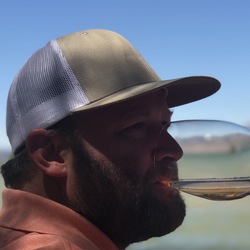


Krug
Brut Rosé Champagne Blend
There are certain occasions that call for Krug Rosé. So, HBTM! The bottle was corked in the summer of 2014. It’s a blend of 45 reserve wines with the oldest being from 2007 and the youngest 2002. This is why I think Champagne Makers are some of the most talented people making wine. They are constantly blending up to 100 plus wines to bring that bottle to bottle and year to year branded flavor of consistency. On the nose; red & pink spring flowers, cherries, strawberries, watermelon, black cherry, black raspberries, notes of blood orange citrus, baked bread, soft volcanic mineral and elegant chalkiness. The palate is always ridiculously delicate. Micro bubbles, silky rich texture with beautiful soft acidity. The palate fruits are similar to the nose; rich & ripe cherries, strawberries watermelon, black cherry, black raspberries, notes of blood orange citrus with hints of marmalade. Red & pink spring flowers, baguette crust, soft powdery minerals that give the palate a slight sting and super powdery chalkiness done just right. The finish is beautifully rich, textured, revealing itself in layers and lasts minutes. Photos of; Founder Joseph Krug, House of Krug, Winemaker Eric Lebel, Krug’s Clos du Mesnil, a small plot of 1.85 hectares of Chardonnay...one of the world’s greatest vineyards and their salon tasting room. Producer history & notes...Krug was founded by Joseph Krug in 1853. They are based in Reims, the main city in France’s Champagne region. It is one of the famous Champagne houses that formed part of the Grande Marques. Today the house is majority owned by the multinational conglomerate LVMH, which owns Moët Hennessy, Louis Vuitton S.A. and who’s wine producer portfolio includes other well known wine brands such as; Moët & Chandon, Veuve Clicquot, Château d'Yquem, Ruinart & Cheval Blanc, Dom Perignon and many others. Despite LVMH's majority ownership, the family is still actively involved in all the key decisions of the house but does not manage the day-to-day operations. Joseph Krug was born Johann-Joseph Krug, a butcher’s son, in Mainz, on the Rhine in 1800 when the city was part of the Napoleonic Empire. Having dispensed with the name Johann, he left Mainz in 1824 and in 1834 moved on to Paris. Germans were in demand in France as accountants and bookkeepers. So, Joseph joined Champagne Jacquesson in Châlons-sur-Marne. He spent eight years with Jacquesson. His work took him beyond accountancy. He went around Europe testing the market and assessing criticism from wine sellers and customers. He learned about composition and taste so that by 1840 he already seemed to have been blending Champagne for at least one other house. In 1841, he married Emma-Anne Jaunay. The daughter of a French hotelier based in London’s Leicester Square. The following year their son Paul Krug was born. In 1842 he moved to Reims and following a year later, Krug et Cie was founded with his partner, Hyppolite de Vivès. Joseph was fluent in French, English and German and even spoke some Russian, putting the company in position to exploit key overseas markets. Joseph died in 1866 and was succeeded by his son Paul Krug, who had been trained by his father to takeover. Joseph under the supervision of Paul, Krug was established as a Grande Marque. By the 1880s the prestige of Krug was acknowledged in the United Kingdom and became the primary overseas market for Champagne. In 1866, the House moved into Rue Coquebert, in Reims as it remains. After Paul’s death in 1910, he was succeeded by his son, Joseph Krug II. However, during World War I Joseph II was taken prisoner and his wife Jeanne played a key role in the House at a time when the Western Front divided the region between the Allies and the Germans. After the war, Joseph II’s slow recovery led to his nephew Jean Seydoux becoming joint manager in 1924. In that decade, the Krug 1926 and 1928 vintages were created, which have been considered by critics to be amongst the greatest Champagnes. Lawyer and wine writer Maurice Healey declared “Krug” the king of all Champagnes. Further, “that the 1928 Krug was the best wine made in the present century.” By the mid-1930s, Paul Krug II, the son of Joseph II, was active in the business and would become head of the House from 1959 to 1977. His father died in 1967, by which time he was, according to Patrick Forbes, “one of the most popular and respected figures in the Champagne district.” In 1962 Henri Krug, the son of Paul II, joined the management, as did his brother Remi three years later. Their arrival was followed by a series of innovations, including extensions in the range of Champagnes. In 1979, for the first time, a graduate winemaker joined the House. In January 1999, the House became part of LVMH and by 2007, the brothers, while remaining on the tasting committee, had stepped down from day-to-day responsibilities. In 2009 Olivier Krug, the son of Henri, became House Director. At harvest, Krug grapes are pressed close to their plots with the first juice kept for 24 hours in a vat prepared for the fermentation stage. The pressing from each plot is vinified separately. A pressing contains 4,000 kilos of grapes and yields 20.5 hectolitres of first juice (cuvée), which is poured into twelve oak casks chosen at random. Once fermentation is complete, the eleventh and twelfth casks are used to top up the other ten casks in order to protect the new wines from oxidation. For fifteen days, each cask is topped up with wine from the same plot. Krug uses small 205 liter oak casks tailor-made from trees that are more than two centuries old in the forests of Hautes Futaies in Central France. The average age of Krug oak casks is 20 years. They are retired after approximately 40 years of use. The wines remain in the casks for several weeks. During this period, clarification occurs naturally from the cool temperature of the cellar given the coming winter, as does a micro-oxygenation process from the use of natural containers, making the wine more resistant to oxygen over time. Finally, between December and January, the wine is drawn off into small stainless-steel vats. From here, depending on the decisions of Krug’s tasting committee, the wines will either contribute to that year’s assemblage or be stored in steel vats in the House’s library of 150 reserve wines to be used in the blend of a future Krug Grande Cuvée and or Krug Rosé. — 8 years ago


Château Smith Haut Lafitte
Grand Cru Classé Pessac-Léognan Cabernet Sauvignon Blend 2012
Dates back to the Crusades & Scottish navigator, George Smith, owner in 18th century, followed by M. Duffour-Dubergier, Mayor of Bordeaux, then Louis Eschenauer, wine shipper. In 1990, Daniel & Florence Cathiard now own estate. A blend of 55% Cab Sauv, 40% Merlot, 4% Cab Franc, & 1% Petit Verdot. Dark red with dark berry fruit aromas, cedar and sweet spice. On the palate rich & complex ripe black fruit flavors, oak & cacao. Firm rich tannins, full, lingering, perfect balance. L-T aging. — 8 years ago
Housley's Century Oak Winery
Judy's Vineyard Cabernet Sauvignon 2014
Great oak and leathery Cab. — 8 years ago
Ktima Gerovassiliou
Avaton 2010
Made from 3 indigenous Greek varieties for the record - Limnio, Mavroudi, Mavrotragano. The history of Greek Wine is amazing obviously. Limnio, the dominant variety here was mentioned by the philosopher, Aristotle in the 4th Century BC. Evidence of the Greeks making Wine in Sicily BC was there on our recent trip and they taught the Romans to make Wine. This, however tastes more like a modern Western dry red because of the use of French Barriques. Unfortunately this masks the identity of the grapes and the terroir. Savoury with berry fruit showing good concentration and silky tannins. Would love to have seen this with less oak influence because the fruit quality is there. — 8 years ago
Taylor Fladgate
10 Year Old Tawny Porto Blend
Taylor's is now into its 4th century & one of the oldest Port houses. It is the last totally independent company of the original British Port houses, still family owned and managed. Aged for 10 years in oak casks. Amber color with aromas of sweet dried fruits and nutty notes. On the palate sweet ripe fruit in a nutty oak wrapper, some vanilla and ending with a raisin aftertaste. Smooth, Nice value. — 8 years ago
Morlet Family Vineyards
En Famille Sonoma Coast Pinot Noir 2006
The is from Morlet Families inaugural vintage of 2006. I must say it’s beautiful with a fair amount more of life ahead. The nose reveals dark cassis and a good presence of cinnamon stick. Blackberries, liqueured dark cherries, plum, poached strawberries, pomegranate extract, black raspberries float through, blueberries, vanilla, light clove & cinnamon, dark fresh florals and violets. The nose is intoxicating! The body is round, ripe and rich. The tannins nicely resolved. The structure, balance, tension and length are in an excellent spot. Mmmmm! Blackberries, liqueured dark cherries, plum, poached strawberries, dry cranberries, pomegranate extract, black raspberries float through, blueberries, vanilla, a touch of bramble, light clove & cinnamon stick, dark rich soils, dry crushed rocks, a little leather, dark fresh florals & violets. The acidity is a waterfall on the palate. The finish is; spectacular elegance, richness, balance and lasts two minutes. One of the best CA Pinot’s we’ve had in a very long time. It deserves an amen & a hallelujah! I paid $65 for this amazing wine 9 years after it’s release (the 2015 released at $115); which brings me back around to a repetitive point of mine. Look for great wines on the secondary market and pay less than producers current release pricing. That is to say, it will aid in keeping you from drinking your new releases too young that are not nearly ready to enjoy! If you are not doing this, you are doing a disservice to your palate and your wine budget. Photos of; their old historical brick building they’ve converted into their winery, interior tasting area, Luc Morlet and their Estate vines. Producer notes and history...Winemaker Luc Morlet is a fifth-generation of a French winemaking family. Growing up in Avenay-Val d’Or, he spent all his spare time working on his family’s estate. His university studies of viticulture and winemaking were put into practice during years of work in vineyards and wineries in Burgundy, Bordeaux, and the south of France. Luc left France in 1996 to join his wife Jodie in her native California. Starting in 2006, Luc Morlet began handcrafting Morlet vineyard designated wines and cuvées of Cabernet Sauvignon and Cabernet Franc in the Napa Valley. As well as; Chardonnay, Pinot Noir, Syrah, a white Bordeaux-style blend and a Late Harvest Sémillon from Sonoma County. Luc is also the brother of Nicolas Morlet the Winemaker of Peter Michael fame. Luc is another producer I respect for his meticulous farming and low intervention winemaking techniques. While his roots are based out of France, he has adapted his skills well to the Napa Valley soils and climate. Morlet styles his wines in a harmonious and refined fashion. Their logo is based upon 19th century French artist Mathurin Moreau’s sculpture entitled, ‘L’Harmonie.’ In August 2010, Luc and and his wife Jodie purchased an estate, just north of the town of St. Helena. Since then, they have converted the historic stone building, built in 1880, into their family winery. The building was originally the Castner Winery that closed during Prohibition. Morlet is located St. Helena Appellation. The estate is planted with Cabernet Sauvignon and is the exclusive fruit source for their ‘Morlet Estate’ label. The Morlet’s ‘Mon Chevalier’ vineyard is located on the hillsides of Knights Valley, overlooking the western slopes of Mount St. Helena. The vineyard benefits from their proximity to the mountain. Warm and windy climate is ideal for the long ripening of the red Bordeaux varietals Cabernet Sauvignon, Cabernet Franc, Merlot, Malbec and Petit Verdot. They recently planted the 20 acre ‘Cœur de Vallée’ vineyard. These Cabernet Sauvignon and Cabernet Franc vines are located on the Oakville Bench, If one such exists. I read a quote from a grower who has been growing in Oakville for many years. He said, “the only bench in Oakville is the one in front of the Oakville Grocery Store.” While it may or may not be true, it’s certainly a funny quote. In addition to these family acres, they buy from farmers under long-term contracts in Fort Ross-Seaview, Russian River Valley, Bennett Valley, Dry Creek and Napa Valley. All of the Morlet’s wines are handcrafted using classical Burgundy and Bordeaux winemaking techniques and are matured in 100% French oak barrels. — 8 years ago
Château Dalem
Fronsac Merlot Cabernet Franc 2012
An 18th century chateau, overlooking the Isle valley, facing Pomerol and the Saint-Emilion limestone hillsides, belonged to the same family for three centuries took over by Michel Rullier in 1955, and his daughter Brigitte took the helm in 2002. Dark red with wide rang of berry aromas and smoky scents. On the palate plum and cherry with cacao, tobacco and smoky oak with herb spice on a solid frame. Firm tannins lead to a lingering finish ending with chalky mineral notes. Nice value. — 9 years ago
The Tragically Hip
Ahead By A Century Chardonnay
Well integrated oak, medium bodied Chardonnay.. really enjoyed it (although I won't deny being influenced by my love of the band 😊) — 9 years ago
Ridge Vineyards
Mazzoni Home Ranch Zinfandel Blend 1999
Valentines day wine! 1999 Mazoni Home Ranch from ridge. Field blend of Zin, Carignane and Petite Sirah from 100 year+ old vines, the kind typical of Italian farmers in the nineteenth century north coast. It's pretty delicious today: extremely clean black cherry with a touch of peppery spice. The oak has faded into the fruit and gave it enough structure to keep this long... the nose was a touch old, but blew off after an hour. — 10 years ago
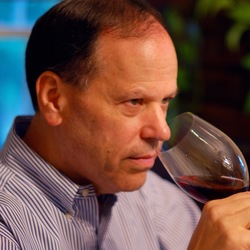








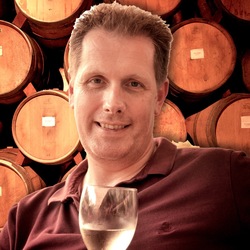
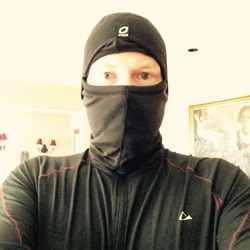
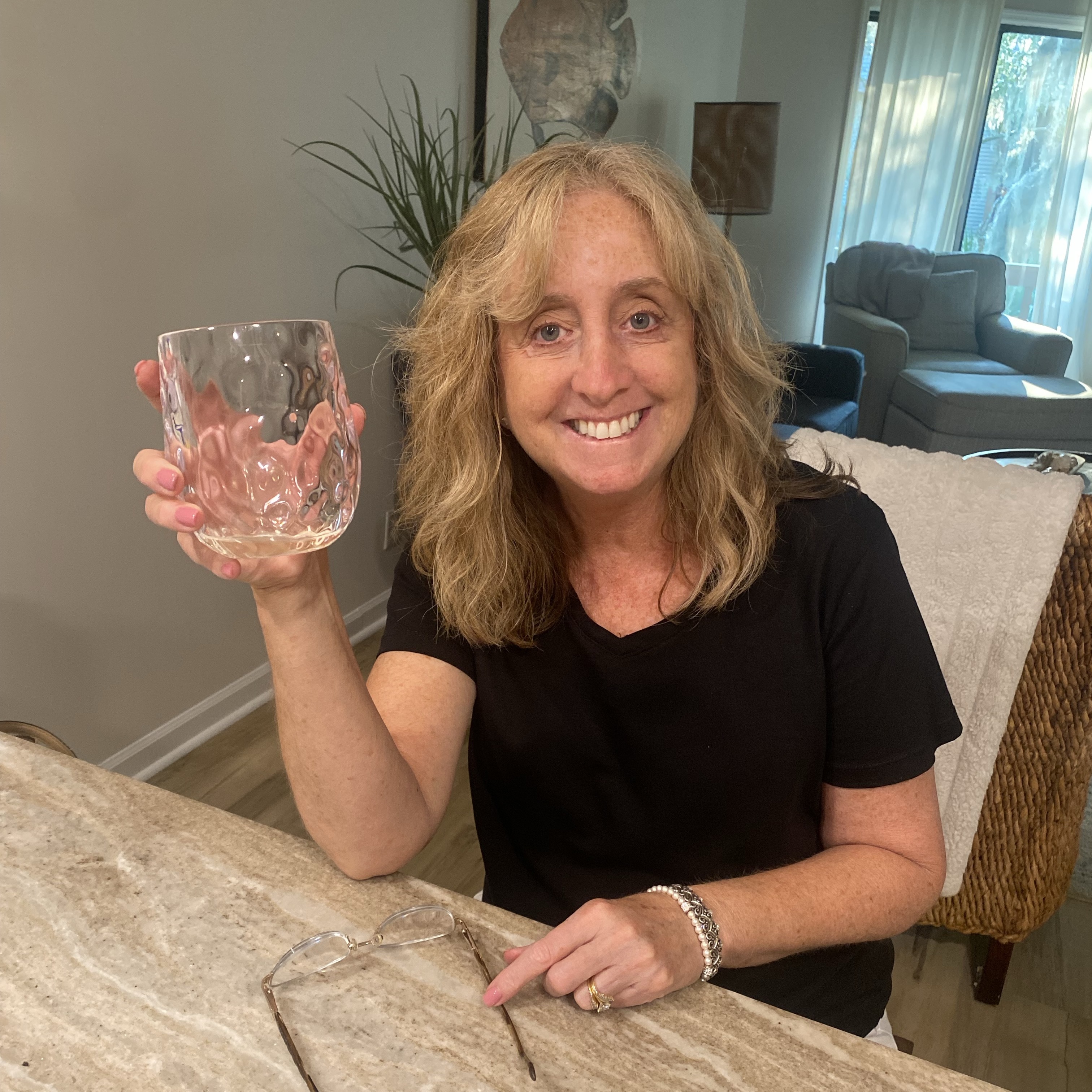
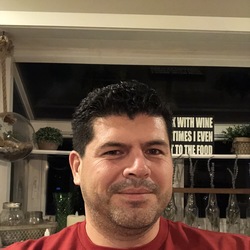
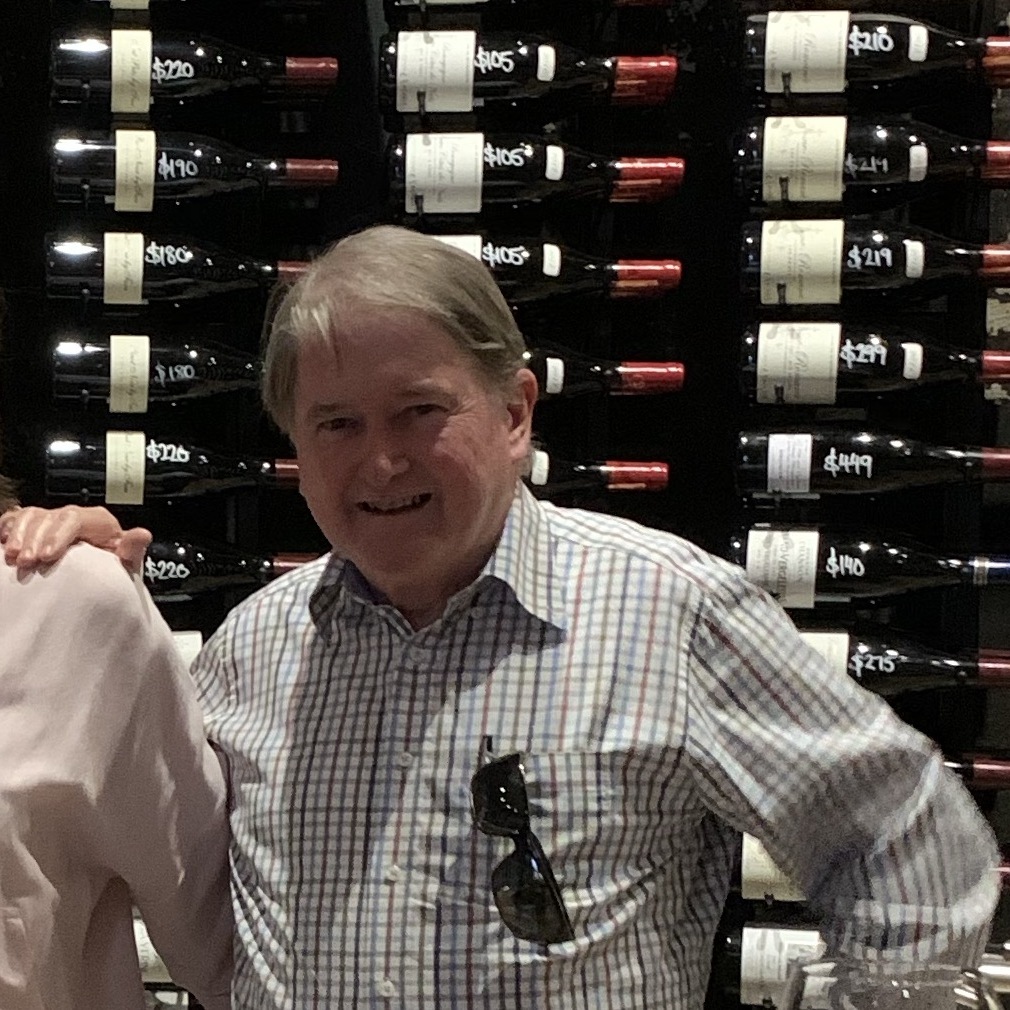


Sipping Fine Wine
Foot of the Andes Mountains on banks of Maipo River in Upper Maipo Valley, 650 meters above sea level, vineyard dates back to mid-19th century, when first pre-phylloxera French varieties were brought to Chile, deep Ruby with aromas of dark fruits & mineral notes, a blend of 92% Cab Sauv & 8% Cab Franc, aged for 15 month in French oak (65% new). On the palate flavors cherry & blackberry with powerful tannins, long finish, very tight, ending with mineral and tobacco notes. Needs ten years. Tasting Sample! — 6 years ago